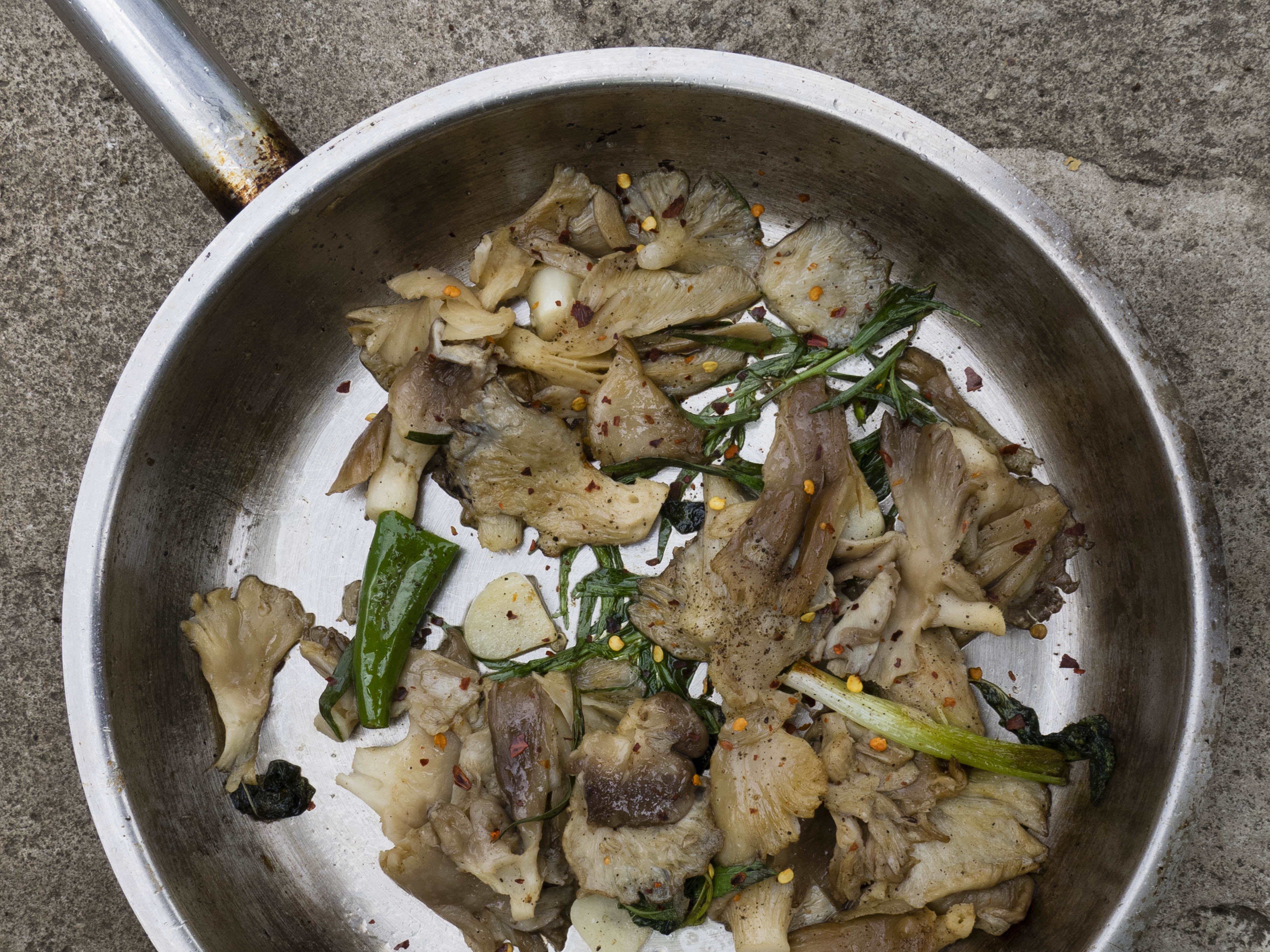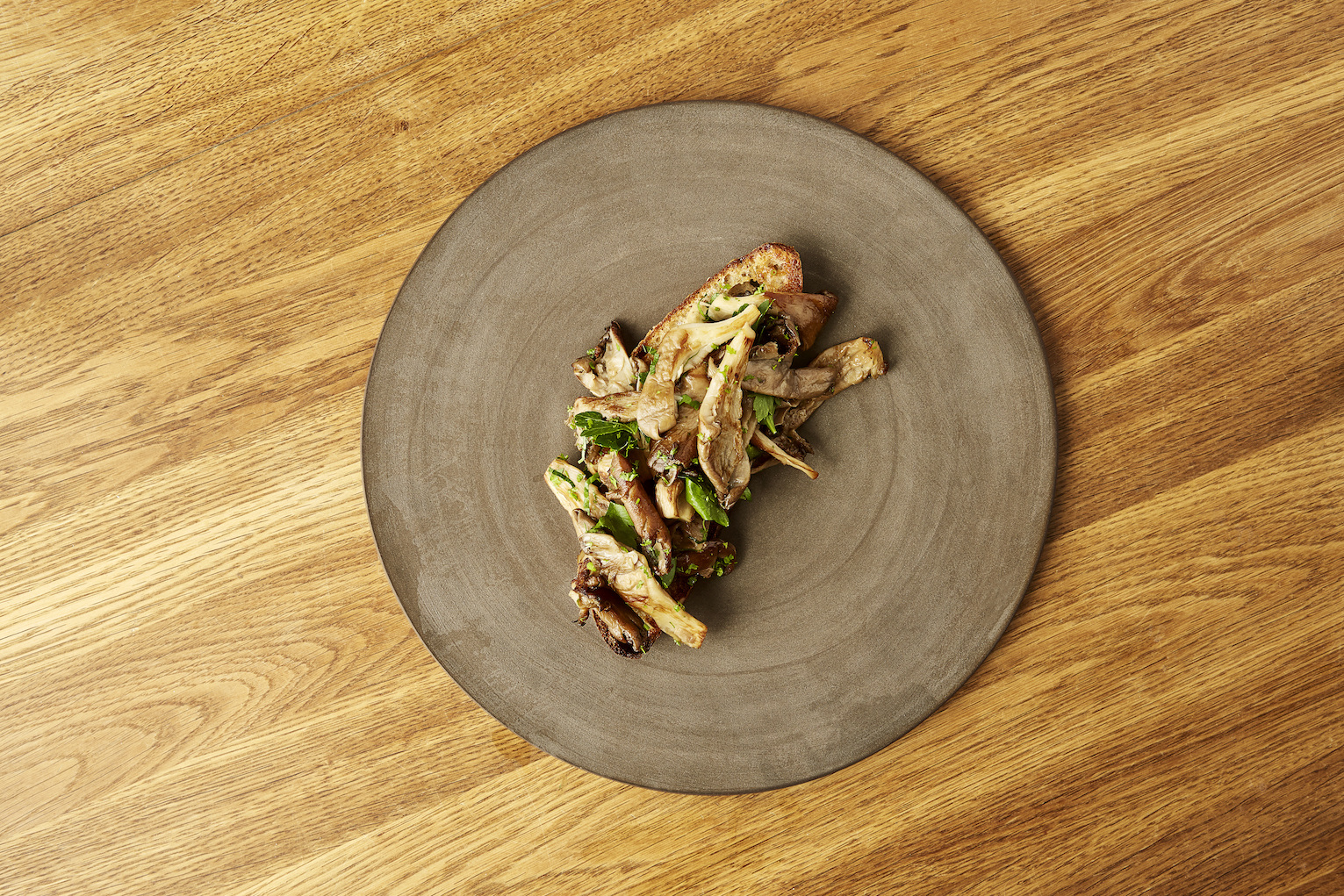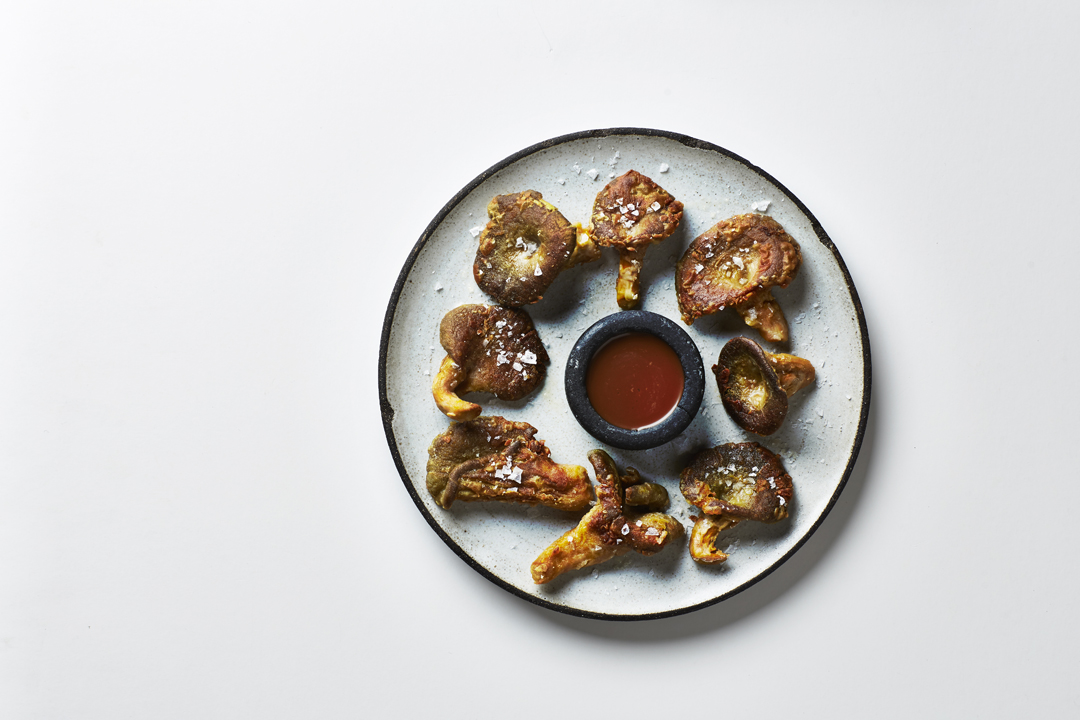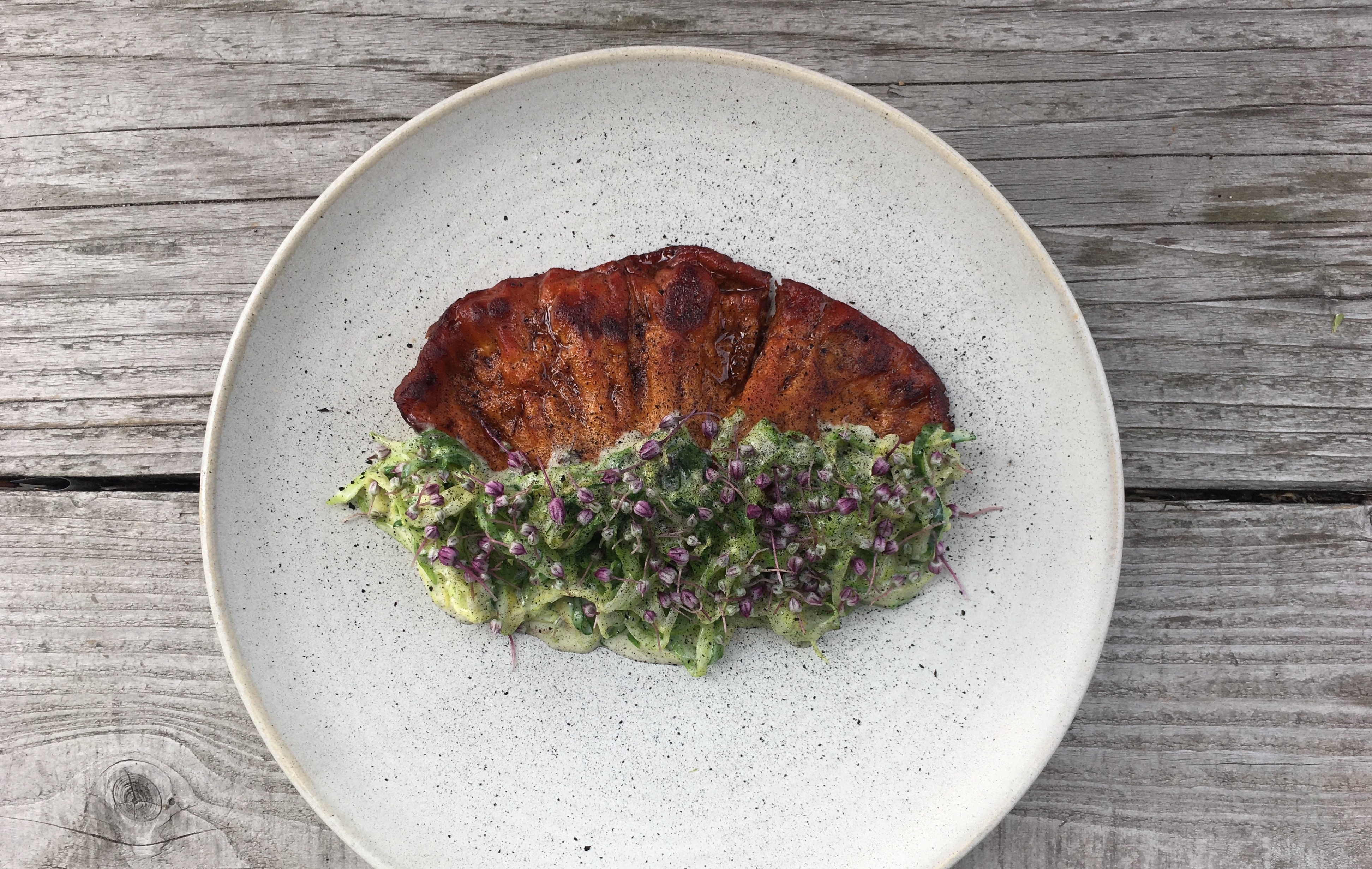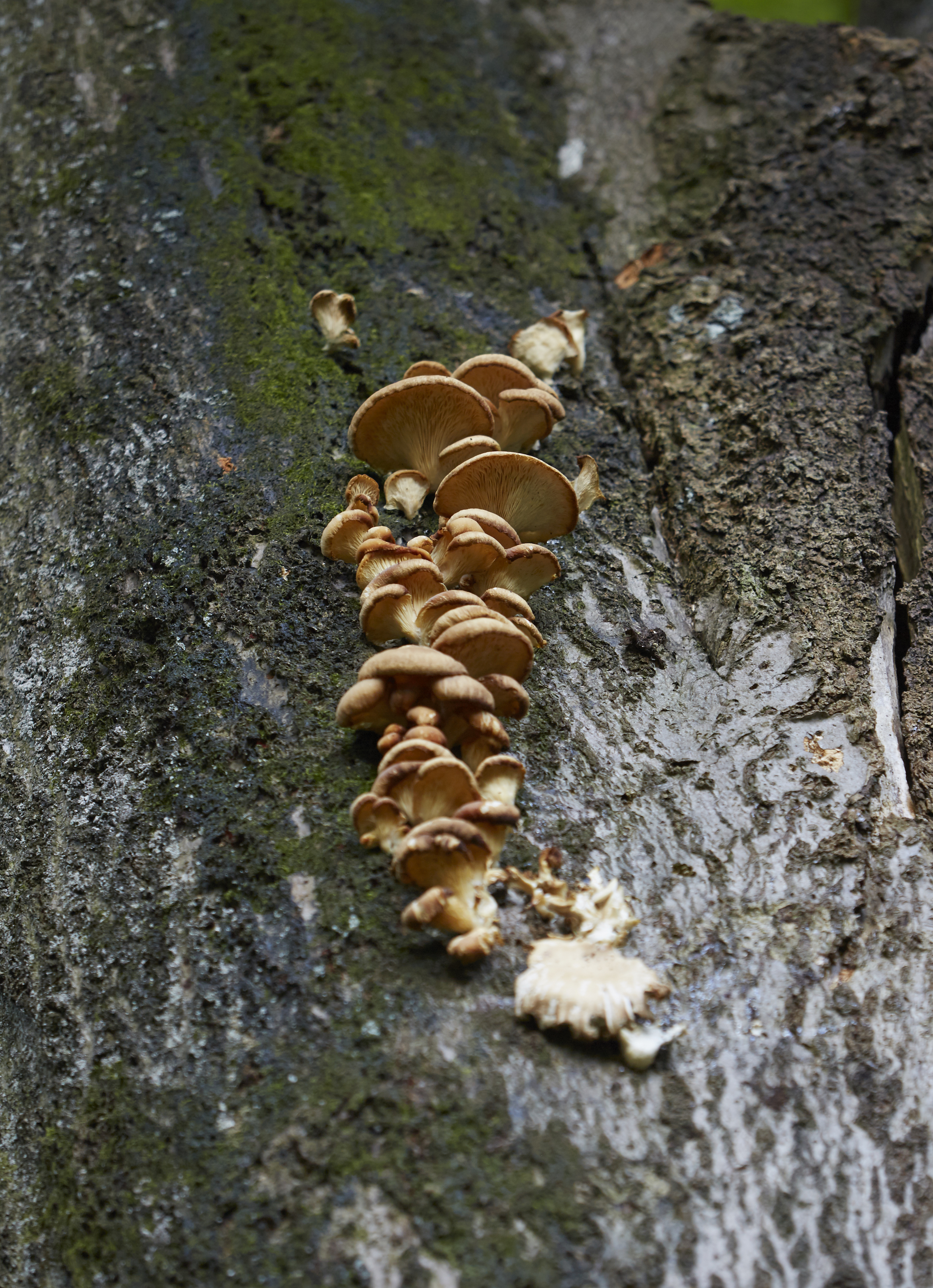

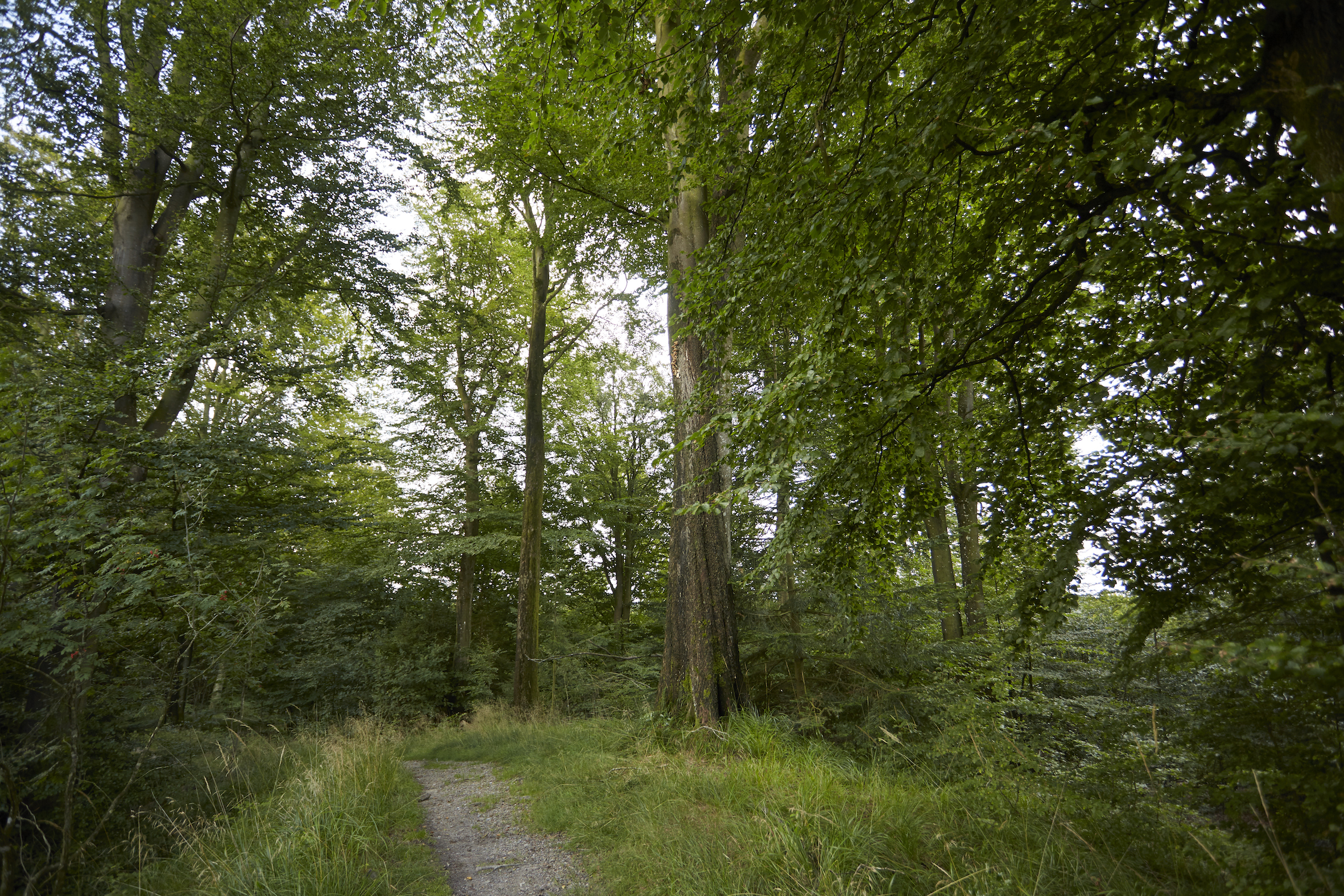
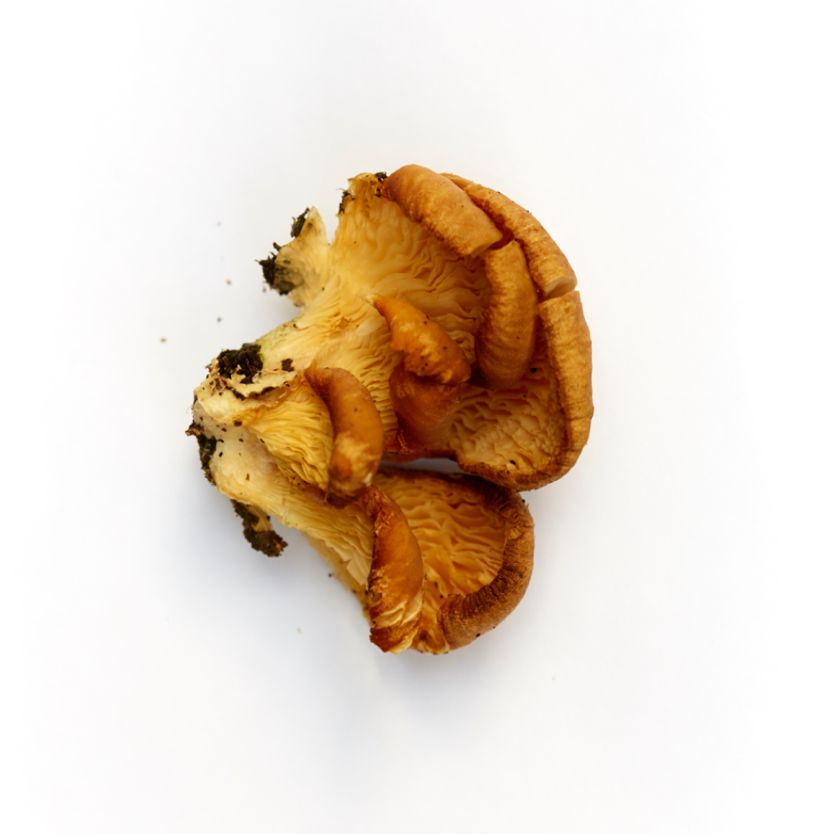
Oyster mushroom
The oyster mushroom is a superb eating mushroom that can be picked even in winter, when there’s not much else available to mushroom foragers.
-
Where to Find It
Oyster mushrooms grow on dead and dying hardwood trees—very often on beech, but also on willows and poplars. In some cases they’ll even make a home on conifers. You'll may find them grafted onto tree stumps in gardens and parks.
Deciduous forests, towns.
-
When to Find It
The oyster mushroom is a winter mushroom and can survive even relatively severe periods of frosty weather.
Entire mushroom: October, November, December, January, February, March.
-
How to Spot It
In form—symmetrical and fan-shaped—and color, the oyster mushroom is reminicsent of its bivalve namesake. Ranging from steel grey to tan to powder blue, its caps grow up to 15 cm in diameter, and are smooth and slightly shiny. The gills are creamy white or greyish-blue, densely packed, and extend slightly down the stem, which is two to three cm long, white, and smooth. Oyster mushrooms tend to grow together in bunches.
-
How to Pick It
Cut the mushroom of the tree and discard the bottom part of the stem. Only younger oyster mushrooms are worth taking home.
Risk of misidentifying the plant
Oyster mushrooms can be confused with the olive oysterling and the veiled oyster mushroom. None of these are toxic, but they're not exactly good eating. Olive oysterlings are olive green in color and have leathery yellow gills, while veiled oyster mushrooms have tougher flesh than oyster mushrooms, scaled caps, and a leather brown center that fades toward the rim.


